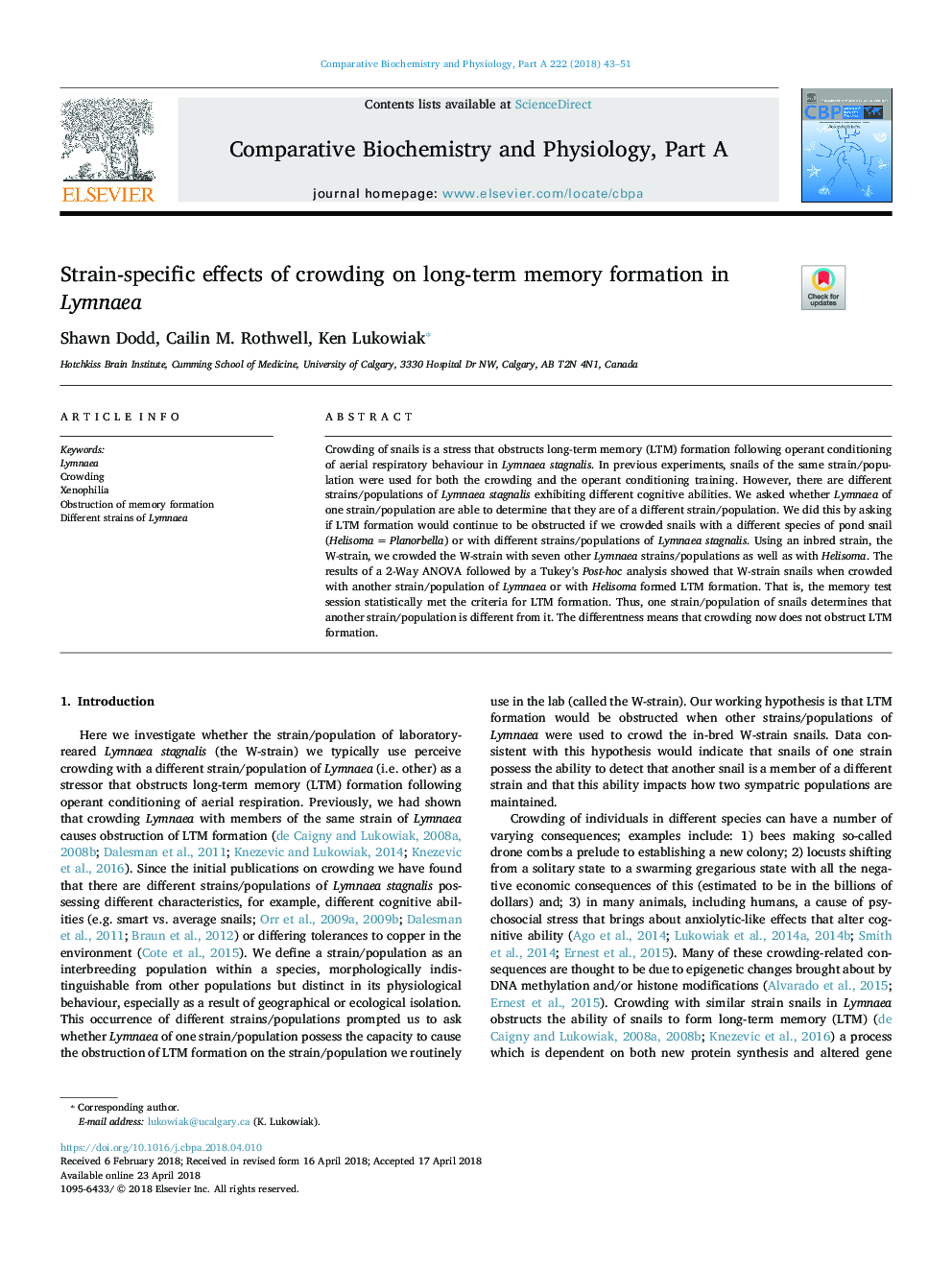| Article ID | Journal | Published Year | Pages | File Type |
|---|---|---|---|---|
| 8318136 | Comparative Biochemistry and Physiology Part A: Molecular & Integrative Physiology | 2018 | 9 Pages |
Abstract
Crowding of snails is a stress that obstructs long-term memory (LTM) formation following operant conditioning of aerial respiratory behaviour in Lymnaea stagnalis. In previous experiments, snails of the same strain/population were used for both the crowding and the operant conditioning training. However, there are different strains/populations of Lymnaea stagnalis exhibiting different cognitive abilities. We asked whether Lymnaea of one strain/population are able to determine that they are of a different strain/population. We did this by asking if LTM formation would continue to be obstructed if we crowded snails with a different species of pond snail (Helisomaâ¯=â¯Planorbella) or with different strains/populations of Lymnaea stagnalis. Using an inbred strain, the W-strain, we crowded the W-strain with seven other Lymnaea strains/populations as well as with Helisoma. The results of a 2-Way ANOVA followed by a Tukey's Post-hoc analysis showed that W-strain snails when crowded with another strain/population of Lymnaea or with Helisoma formed LTM formation. That is, the memory test session statistically met the criteria for LTM formation. Thus, one strain/population of snails determines that another strain/population is different from it. The differentness means that crowding now does not obstruct LTM formation.
Related Topics
Life Sciences
Biochemistry, Genetics and Molecular Biology
Biochemistry
Authors
Shawn Dodd, Cailin M. Rothwell, Ken Lukowiak,
